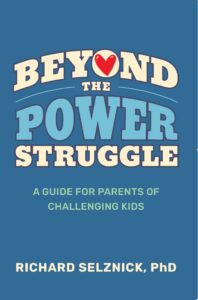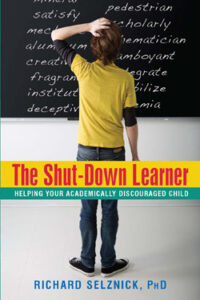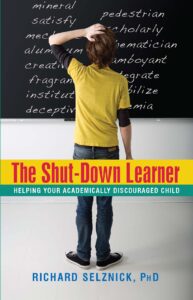IEP’s & 504’s: What’s the Difference?
IEP’s & 504’s What’s the Difference?
Do you know the difference between a 504 Plan and an IEP?
It’s fine if you don’t, but in case these are relevant to you, here’s a basic primer.
504 Plans
- 504’s only provide accommodations, not direct services. The provision of extra time is a classic accommodation given. There are about five other typical accommodations offered in most 504’s.
- To obtain a 504, the child needs a diagnosis of a disability stated on letterhead by a medical practitioner (e.g., physician or psychologist).
- Once you have the diagnosis on letterhead, 504’s are not usually that difficult to obtain.
- The majority of children receiving 504 plans are those who have been diagnosed with ADHD.
- 504’s are reviewed annually.
IEP (Individualized Education Plan)
- To obtain an IEP the child is deemed to be classifiable under the special education categories governed by federal law. There are 13 special education categories based on Individuals with Disabilities Education Act or IDEA. The categories are interpreted somewhat differently depending on the state you reside.
- IEP’s are generated by the district’s special education team. An outside evaluation (e.g., a psychological or neuropsychological) may offer a diagnosis, but the school’s team needs to come to its own conclusions based on their assessments.
- The vast majority of children with IEP’s fall under the classification of Specific Learning Disability (SLD).
- Compared to the relative ease of obtaining a 504, the IEP process can be lengthy and complex.
- Different than a 504, with an IEP the child receives some level of direct service (remediation), along with accommodations.
Takeaway Point
Of course, there’s a lot more to it than what is indicated above, but these points will get you started.

 Georgia is a lively, spontaneous and friendly 10-year- old student entering the fifth grade. Cognitive testing placed her between the average to above average range for most of the domains assessed.
Georgia is a lively, spontaneous and friendly 10-year- old student entering the fifth grade. Cognitive testing placed her between the average to above average range for most of the domains assessed.
 Copyright, Richard Selznick, Ph.D. 2023, www.shutdownlearner.com.
Copyright, Richard Selznick, Ph.D. 2023, www.shutdownlearner.com.
 wuns a pon a time their was a boy wgo had no frends so he was always alon But than on day evry thing change His mom gave him a voilinto play it sounded horabel so he said I am never playing this again so one Day he went to in the stor and heard the guy play the vialin it sounded awsome so he said to his mom thats how I want to play well then you need to pratis his mom said and then he did and he was so good at it.
wuns a pon a time their was a boy wgo had no frends so he was always alon But than on day evry thing change His mom gave him a voilinto play it sounded horabel so he said I am never playing this again so one Day he went to in the stor and heard the guy play the vialin it sounded awsome so he said to his mom thats how I want to play well then you need to pratis his mom said and then he did and he was so good at it. Copyright, Richard Selznick, Ph.D. 2022, www.shutdownlearner.com.
Copyright, Richard Selznick, Ph.D. 2022, www.shutdownlearner.com. Started in 2009 upon the release of my first book, The Shut-Down Learner, there have been nearly 600 blog posts completed on a weekly basis over those years..
Started in 2009 upon the release of my first book, The Shut-Down Learner, there have been nearly 600 blog posts completed on a weekly basis over those years.. In my ongoing education, this week I learned about the “Barn Kids” and the “Populars.”
In my ongoing education, this week I learned about the “Barn Kids” and the “Populars.”
 With the arrival of newborn Emmett Gaetano Selznick last weekend, an official new chapter begins in our lives.
With the arrival of newborn Emmett Gaetano Selznick last weekend, an official new chapter begins in our lives.